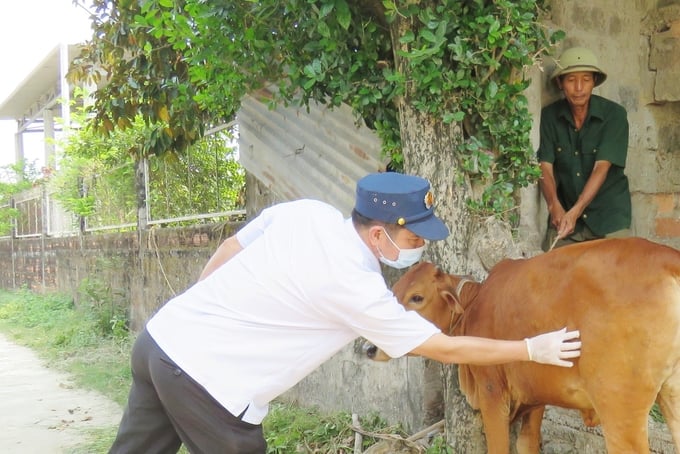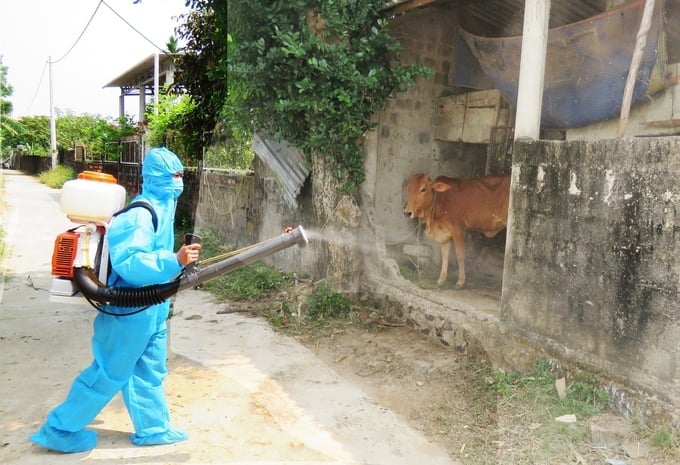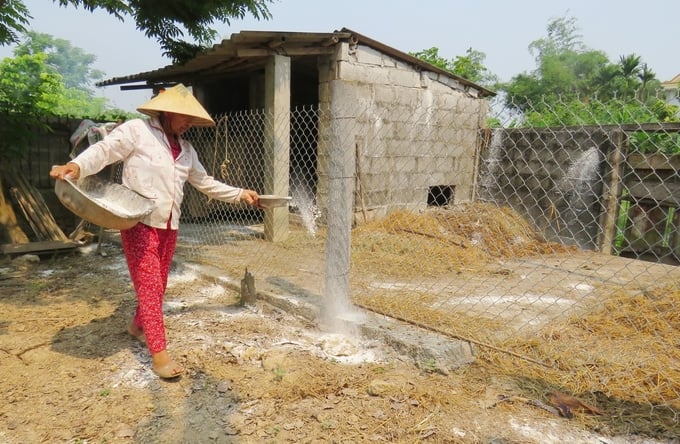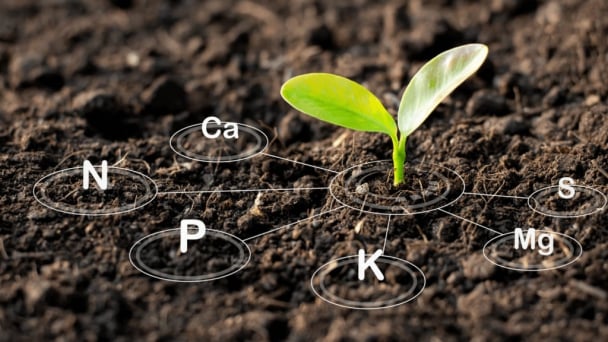May 21, 2025 | 10:01 GMT +7
May 21, 2025 | 10:01 GMT +7
Hotline: 0913.378.918
May 21, 2025 | 10:01 GMT +7
Hotline: 0913.378.918

Officers from the Quang Binh province's Sub-Department of Livestock Production and Animal Health inspecting diseased cattle in Quang Ninh district. Photo: T. Phung.
Since the beginning of April, livestock farmers across the districts of Tuyen Hoa, Quang Trach and Bo Trach have noticed unusual symptoms in their cattle herds, and subsequently reported these observations to local veterinary authorities. Following sample testing, Quang Binh province's Sub-Department of Livestock Production and Animal Health confirmed the outbreak of Lumpy Skin Disease in the districts of Bo Trach, Tuyen Hoa, and Quang Trach.
Mr. Tran Cong Tam, General Director of Quang Binh province's Sub-Department of Livestock Production and Animal Health, reported that as of April 16, Lumpy Skin Disease had affected 20 cows belonging to 13 households across 6 communes in the districts of Bo Trach, Tuyen Hoa, and Quang Trach, with 4 confirmed deaths.
"Quang Xuan and Quang Luu communes in Quang Trach district; Dong Le town and Thuan Hoa commune in Tuyen Hoa district, have declared outbreaks of Lumpy Skin Disease in cattle. However, the disease is currently under containment in Tay Trach commune and Hoan Lao town in Bo Trach district. These local outbreaks have not occured for more than 21 days," Mr. Tran Cong Tam added.
After the outbreak was detected in Thuan Hoa commune, Tuyen Hoa District People's Committee made a decision to declare the local outbreak of Lumpy Skin Disease in cattle.
Mr. Cao Tien Dung, Vice Chairman of Tuyen Hoa District People's Committee, emphasized that the Committee has promptly requested local governments to implement disease prevention and control measures, as well as to enhance vaccination efforts against Lumpy Skin Disease in cattle herds.
"Stakeholders must deploy information dissemination programs; instruct local residents to actively monitor livestock exhibiting symptoms of the disease; promptly report newly discovered cases to local veterinary authorities; and effectively implement the disease prevention and control measures," Mr. Cao Tien Dung added.
During the following week, reports surfaced of Lumpy Skin Disease affecting cattle herds in Hien Ninh commune, Quang Ninh district. Consequently, veterinary officers from the province's Livestock and Veterinary Sub-Department have been assigned to assist local residents in containing and combating the disease.

Disinfection spraying in areas with affected livestock within Hien Ninh commune. Photo: T. Phung.
According to Mr. Tran Thanh Tung, an agricultural officer in Hien Ninh commune, the commune is currently managing a herd of nearly 600 cattle. Following reports of diseased cattle from local residents, the commune has deployed multiple vaccination programs against Lumpy Skin Disease in various hamlets.
Ms. Tran Thi Tho, a livestock farmer residing in Truong Duc hamlet, Hien Ninh commune, owns a mother cow and a small calf. According to her, the mother cow has been vaccinated; however, the calf has not received vaccination due to its young age.
"About a week ago, we noticed unusual symptoms and lumpy skin on the calf, so we reported these observations to the local veterinary officers. Our family was instructed to maintain hygiene around the pen area, apply lime powder, and isolate the calf from its mother," Mrs. Tho shared.
Mr. Phan Van Hau, a livestock farmer residing in Nam Co Hien hamlet, also owns a herd of four cattle. Four days prior to this article, one cattle within the herd developed symptoms indicative of Lumpy Skin Disease, which prompted Mr. Hau to isolate the affected cattle within the pen, and prevent it from grazing with the herd. Subsequently, local veterinary officers conducted inspection and disinfection within the vicinity of the pen area.
"I have requested the local veterinary officers to administer vaccinations against Lumpy Skin Disease for my herd of cattle. Four other households within the hamlet have also reported cases of diseased cattle like mine. These families have vaccinated their herds upon discovering symptoms of the Lumpy Skin Disease," Mr. Hau added.

A local resident applying lime powder in the vicinity of their enclosed cattle pen area for disinfection. Photo by T. Phung.
In response to the potential spread of Lumpy Skin Disease among local cattle herds, Quang Binh province's Sub-Department of Livestock Production and Animal Health has actively collaborated with local governments to implement strict disease control measures.
Accordingly, local governments in affected areas have deployed disinfection activities at livestock households, and delimited outbreak areas. Additionally, they have signed commitments and advised livestock owners against selling, slaughtering, or discarding dead livestock into the environment.
Mr. Tran Cong Tam stated: "The Sub-Department has requested the districts' governments to assist communes and towns located in affected areas, areas at risks, buffer areas, in establishing temporary inspection teams and checkpoints for animal quarantine, with the aim of controlling the transportation of cattle in and out of the affected areas."
As of the afternoon of April 23, Quang Binh province has reported cases of Lumpy Skin Disease in cattle herds across 10 communes spanning 4 districts.
Translated by Nguyen Hai Long

(VAN) Facing the threat of rabies spreading to the community, Gia Lai province urgently carries out measures to vaccinate dogs and cats on a large scale.

(VAN) Disease-free livestock farming not only protects livestock herds but also stabilizes production and livelihoods for many farmers in Tuyen Quang.

(VAN) Japan's grant aid project contributes to capacity building, promoting organic agricultural production, and fostering sustainable community development in Dong Thap province.

(VAN) For years, the CRISPR-Cas9 genome technology has been reshaping genetic engineering, a precision tool to transform everything from agriculture to medicine.

(VAN) Vietnam aims to become a 'leader' in the region in the capacity and managing effectively soil health and crop nutrition.
![Reducing emissions from rice fields: [Part 1] Farming clean rice together](https://t.ex-cdn.com/nongnghiepmoitruong.vn/608w/files/news/2025/05/05/z6509661417740_a647202949c539012a959e841c03e1d3-nongnghiep-143611.jpg)
(VAN) Growing clean rice helps reduce environmental pollution while increasing income, allowing farmers to feel secure in production and remain committed to their fields for the long term.
/2025/05/19/5136-1-144800_230.jpg)
(VAN) The Nghe An Provincial People's Committee has just approved the list of beneficiaries eligible for revenue from the Emission Reductions Payment Agreement (ERPA) in the North Central region for the year 2025.